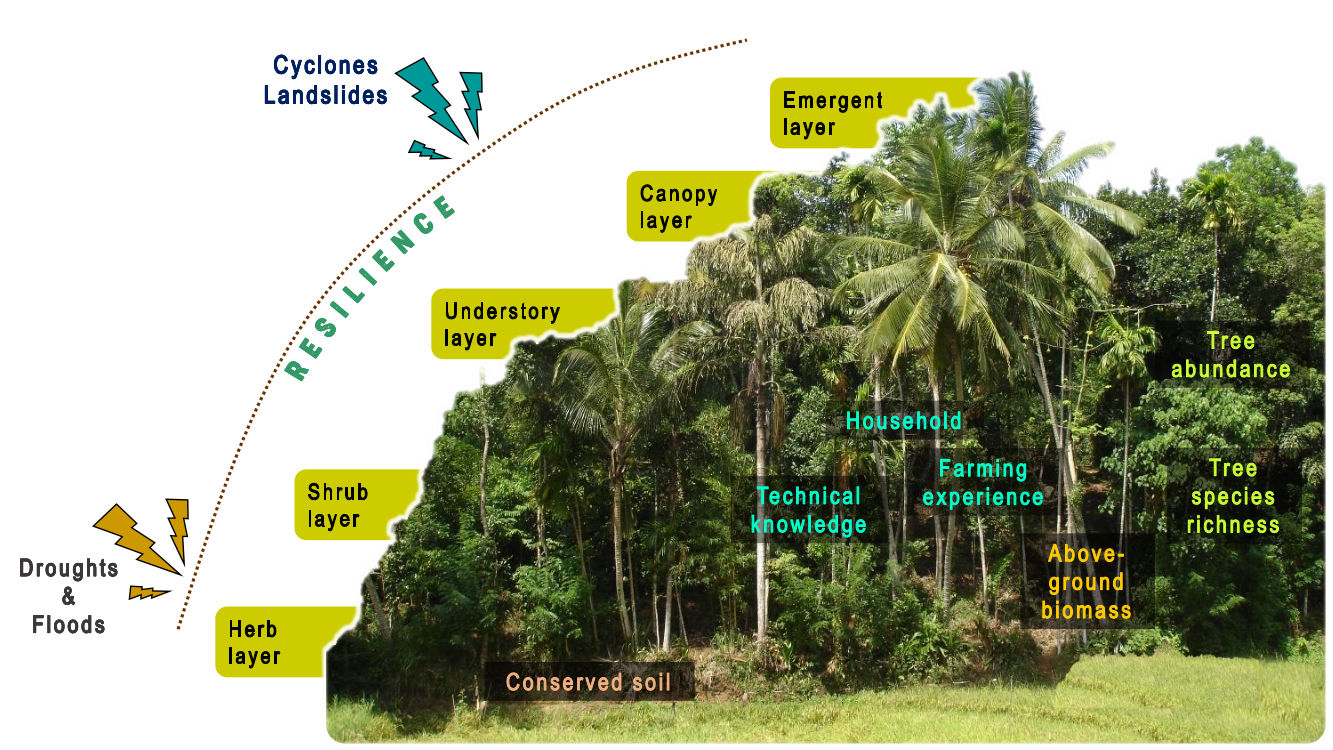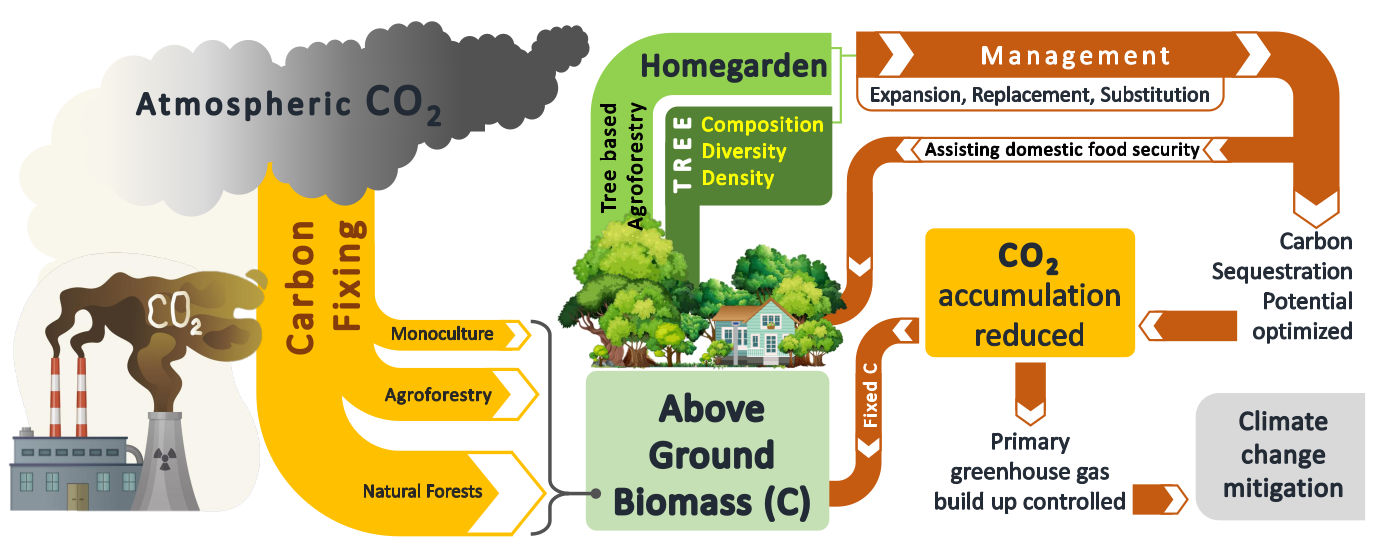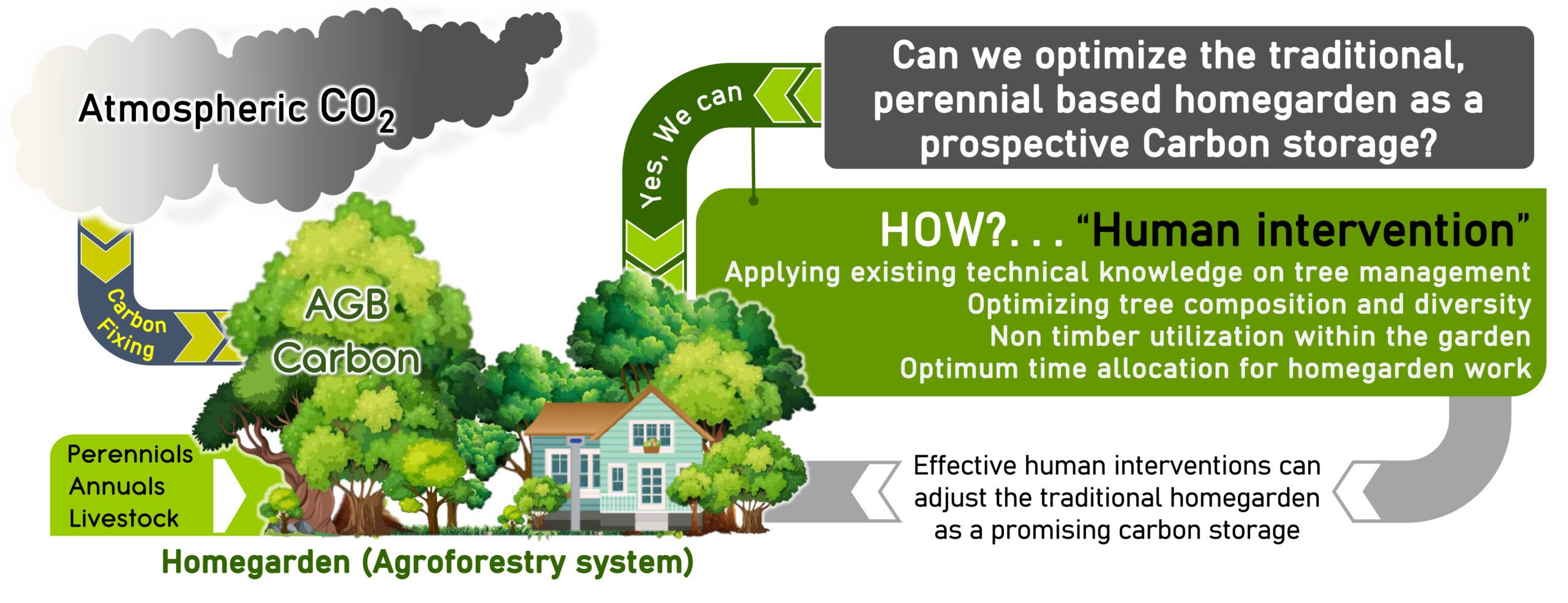Comparative Analysis of Climate-Resilient Biodiversity of Home Garden ecosystems in Different Agro-Ecological Regions of Sri Lanka

A research conducted by Faculty of Agriculture, University of Peradeniya to study the climate-resilient biodiversity of home garden ecosystems in different agro-ecological regions of Sri Lanka
Strategic Thrust Area : Safeguard Natural Resources and Biodiversity from Climate Change Impacts
Funding agent : National Science Foundation of Sri Lanka
Grant number : NTRP/217/CC&ND/TA-04/P-02/01
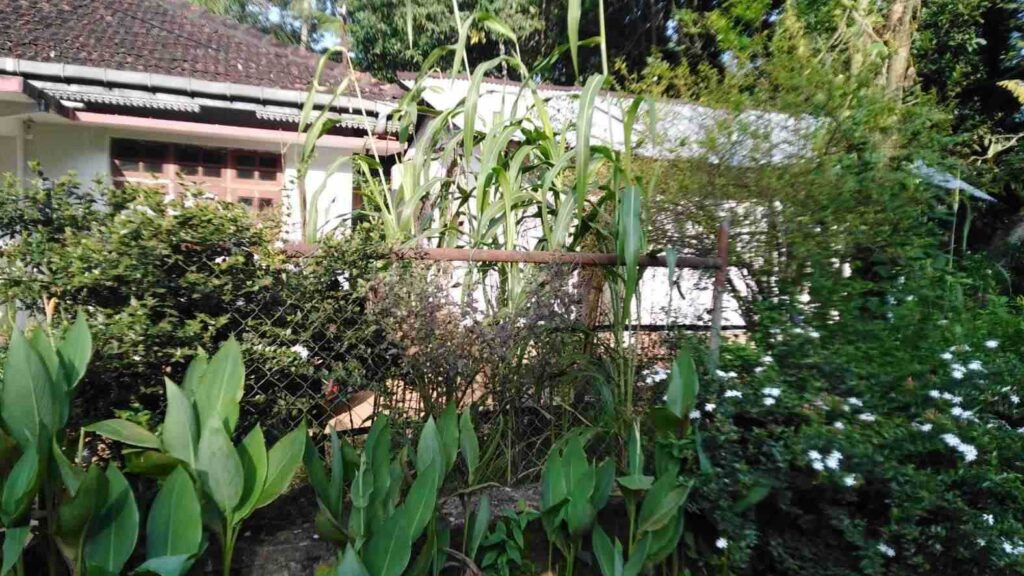
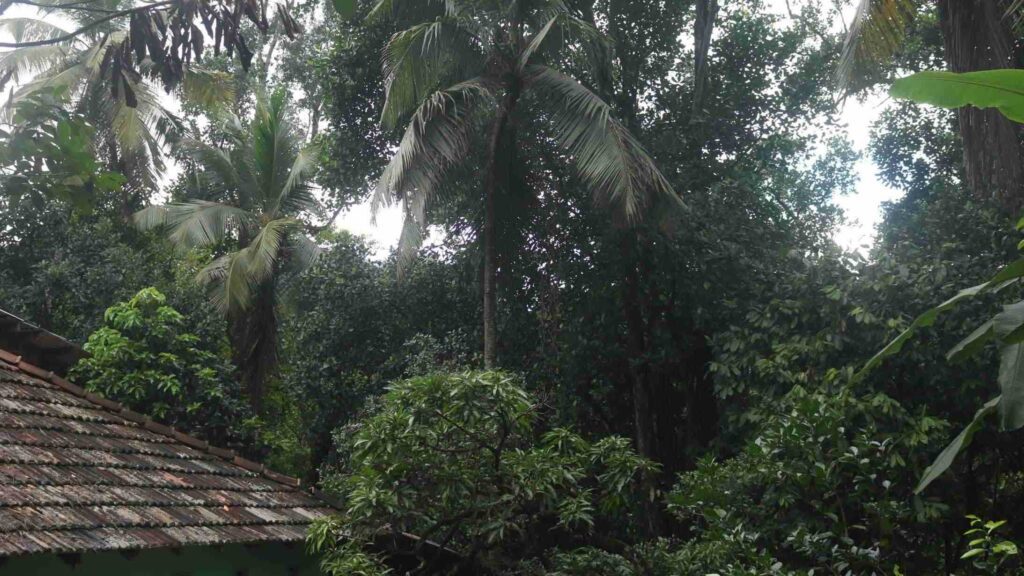
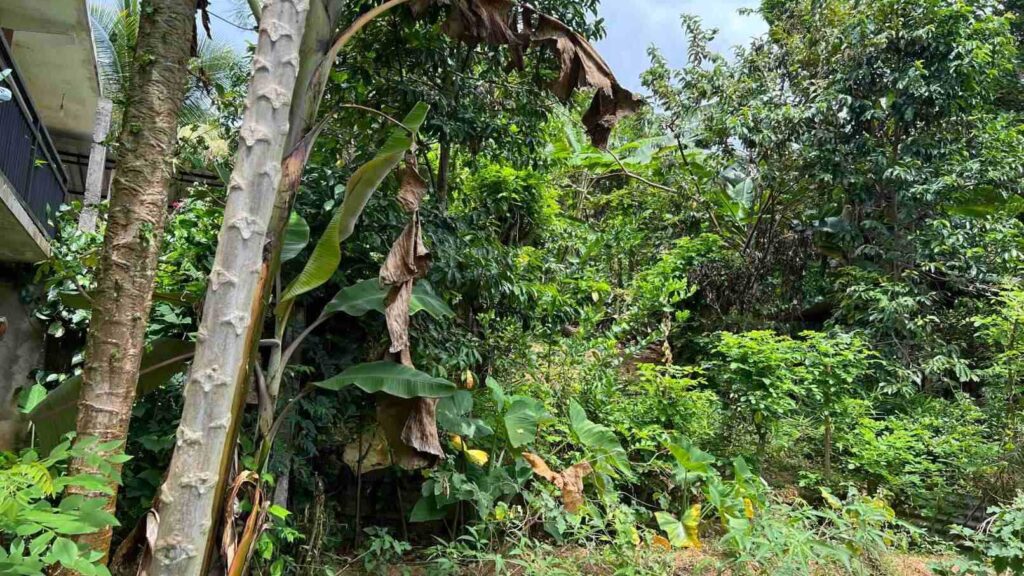

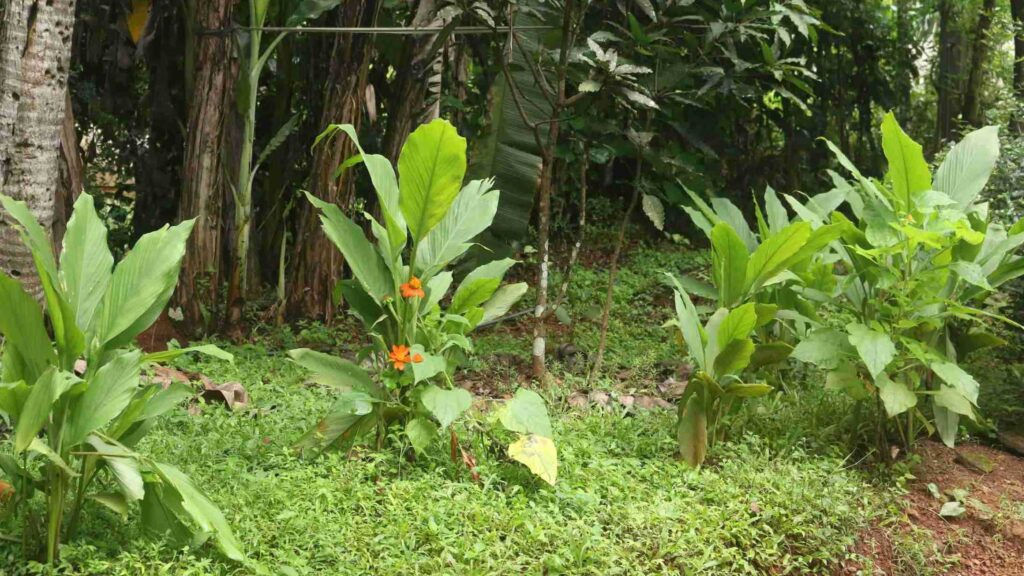
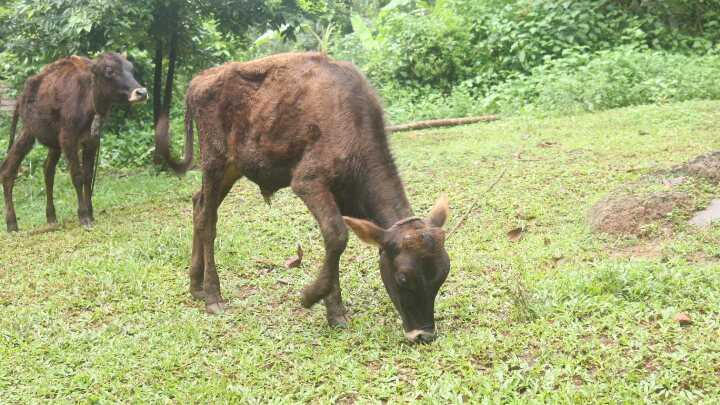
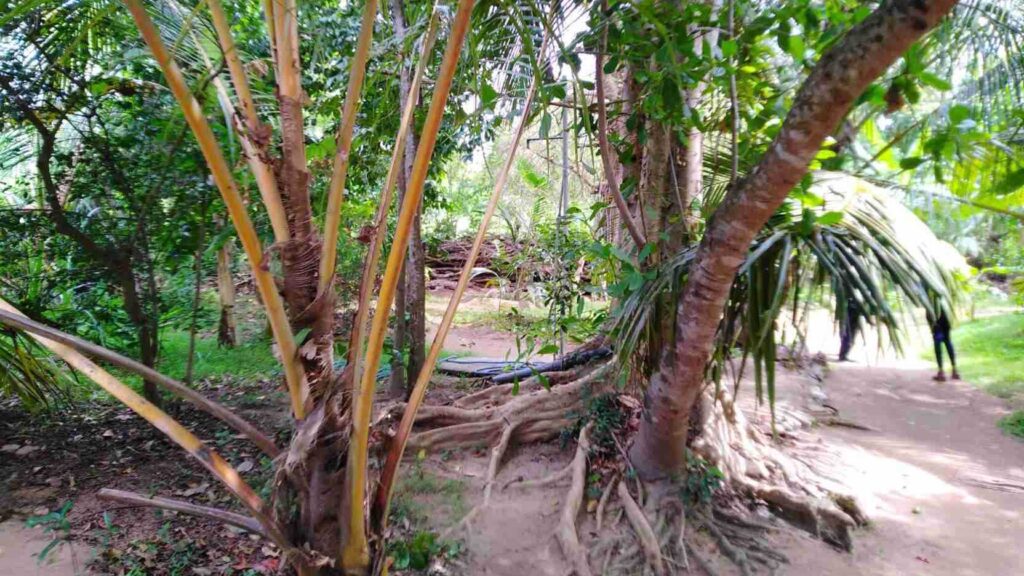
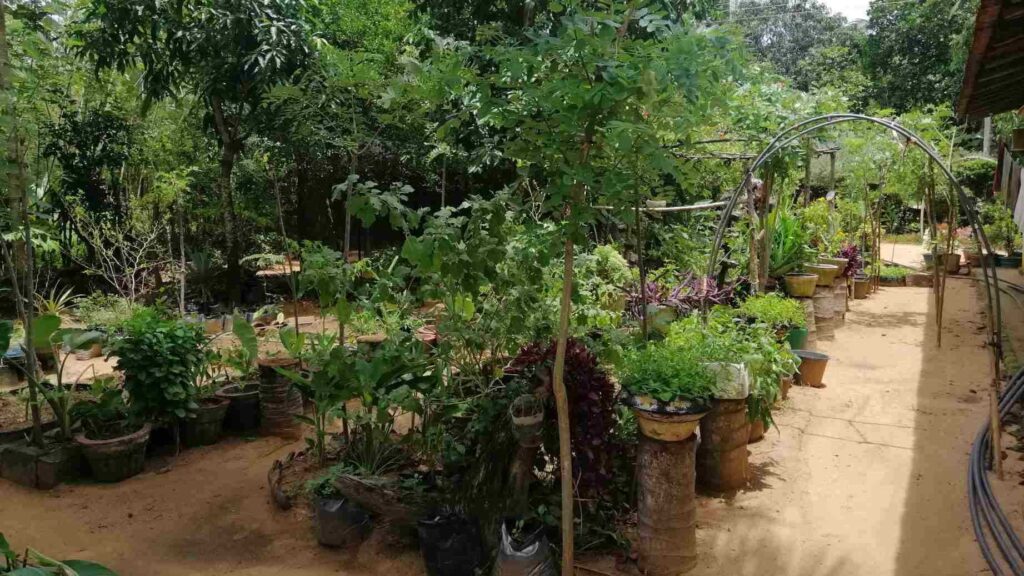
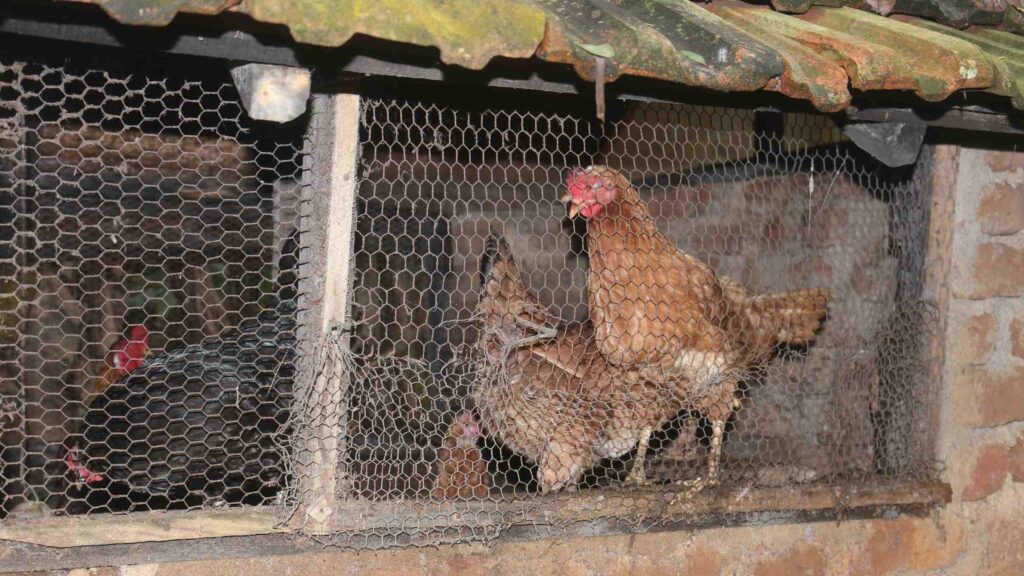
Background
As one of the earliest land use systems, homegardens have developed over time in response to the lack of fertile land for agriculture throughout the history of civilization. The term “trees outside forests” (TOF) refers to trees found in tropical residential gardens, which may include tea, coconut, and rubber trees. Most tree species found in homegardens are multipurpose in nature, and most of them can be classified as either indigenous or occasionally endemic.
Homegardens benefit the environment and the household in a variety of economical and agro-ecological aspects. In normal home gardens, one may mostly notice firewood, fodder, medicine, spices, and aesthetically pleasing plants in addition to crops and fruits. In terms of agro-ecological services, the primary function of agro ecosystems is to provide the necessary resources for the organic matter and dead leaves to naturally decompose.
Although the term “homegarden” has many various definitions in the literature, in a nutshell, it can be defined as a diverse and sustainable land use system that mixes crops, livestock, and aquaculture and offers the family income, employment, and environmental services.
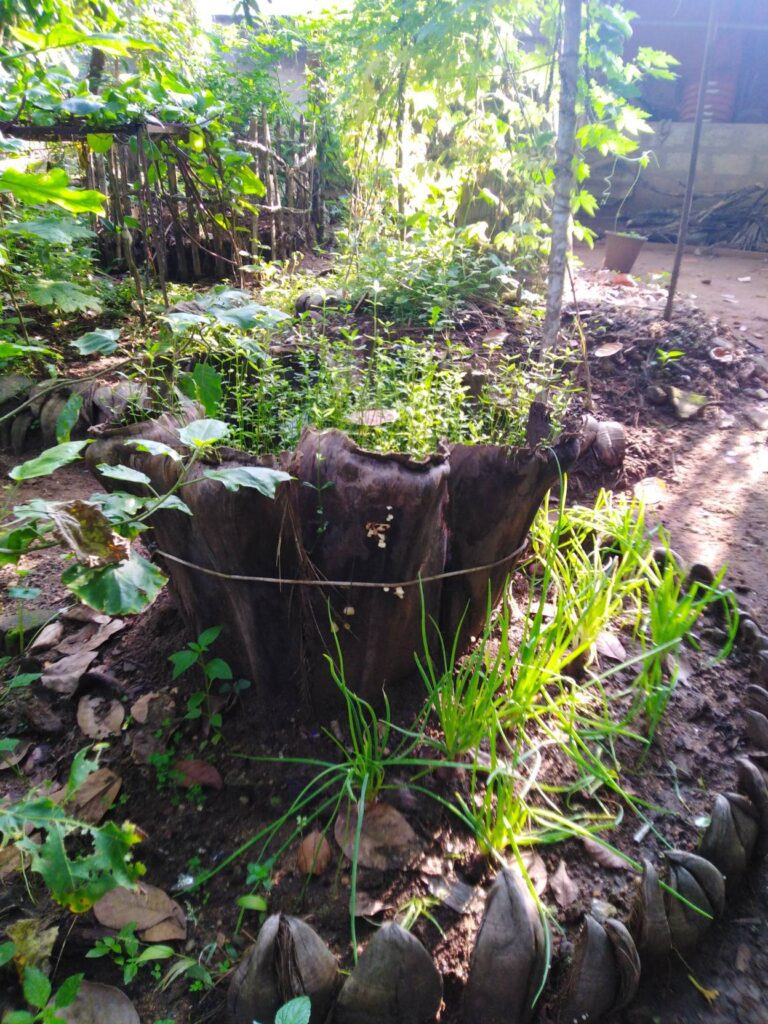
Objectives
Objective 01
To identify and describe the different components of biodiversity and abiotic factors of HG systems in different climatic conditions
Objective 02
To assess the contribution of different components of biodiversity of HG in order to demonstrate climate resilience in different and extreme climatic conditions
Objective 03
To quantify the contribution of different components of HGs for climate resilience (reduce vulnerability) in order to identify the gaps in tackling the extreme climatic conditions
Objective 04
To develop and validate models for describing best practices to ensure climate-resilient biodiversity and sustainability of HG in each AEZ
Highlights of the Research Findings
Homegarden interventions should be specific to agro-ecological regions.
Homegarden interventions should be specific to agro-ecological regions.
Adoption of soil and water conservation practices in a homegarden improves its productivity and climate resilience.
Resilience of the homegarden ecosystem can be improved by the presence of perennial trees and associated environment that facilitate various ecosystem services, particularly provisioning and supporting services.
Tree-based, vertically stratified homegardens possess a significant potential to act as modern carbon storages reducing the pressure on natural forests due to supply of timber which are known as the primary carbon stocks.
Homegardens essentially provide a primary or secondary habitat for macro wild-faunal species (especially insects, small mammals, reptiles and birds), creating man-made agroforestry systems resembling the characteristics of natural forests that could foster environmental sustainability.
Homegardens can be considered as a conservation unit of many faunal categories, particularly arthropods fauna which in return provide many ecosystem services leading towards decomposition, recycling of organic materials, sustaining of food webs and food chains, maintain of natural balance among species, and pollination etc.
There is a potential to enhance household dietary diversity and household food security with increased availability of variety of nutritious food sources from homegardens, both plant and animal-based food items.
Organizing homegarden resources, by managing the tree composition and diversity through substitution, replacement, management and increasing number of trees, and incorporating livestock and poultry as a component of the homegarden, helps to enrich and sustain the household food basket while enhancing the resiliency of the system.
Study sites
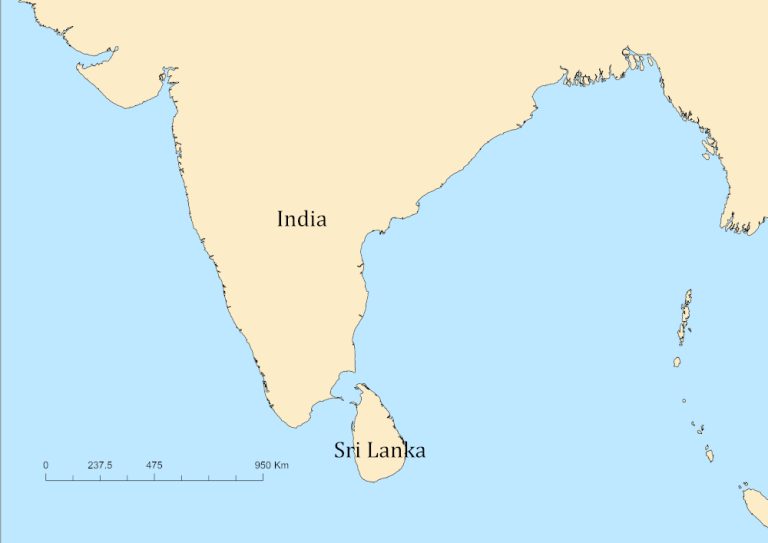
World map
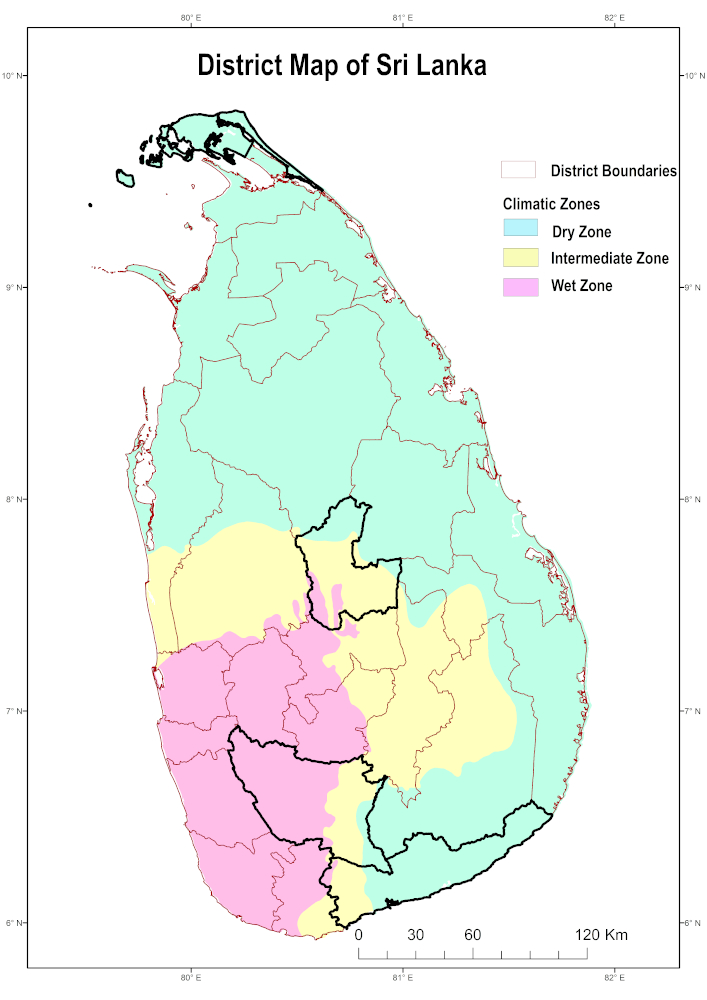
District map
